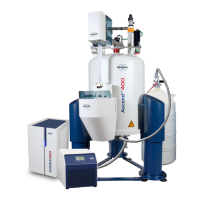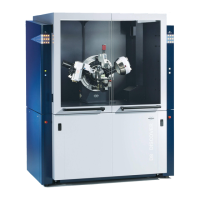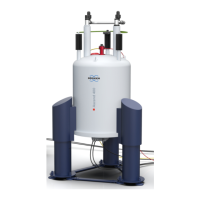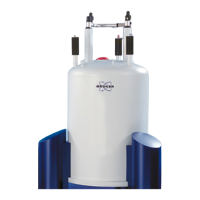The NMR Sample
52 / 86 H171804E_14_001
7.2 Sample Tube
When the sample is being analyzed it may be rotated, depending on the type of probe or
experiment. Spinning the sample has the effect of cancelling out field inhomogeneities in the
X and Y direction and consequently improves the spectral resolution. A disadvantage of
spinning is that it may lead to the presence of spinning sidebands. These are spurious
signals (i.e. peaks) that result from the modulation of the magnetic field at the spinning
frequency. The peaks always appear on either side of any large genuine peak at a separation
equal to the spinning rate. The intensity of these sidebands will be proportional to the
intensity of the genuine peak. Thus if the spin rate is 20 revolutions/second (= 20 Hz), you
would look for spinning side bands at frequencies 20 Hz above and below the resonance
frequencies of genuine signals.
Figure7.1: Spectrum Showing Spinning Sidebands
1. 13C Satellites 2. Spinning Sidebands
While the presence of spinning sidebands may be inevitable, their size often depends on the
sample tube quality. Ideally, the sample tube should have perfect cylindrical symmetry.
Unusually large sidebands might suggest that the tube symmetry is inadequate and might
warrant using tubes with higher specifications (and of course greater cost).
Sample tubes must always be kept clean and free from dust and scratches. Do not scrub the
tubes with test tube brushes. Be aware that new NMR tubes cannot be assumed to be clean.
The tubes may be cleaned by washing in Acetone or distilled water. Liquid detergent may be
used as long as it is rinsed out within a few minutes to prevent etching of the tube. The tubes
may also be cleaned ultrasonically in an appropriate solution. If all the above measures fail,
the tubes should be soaked in AQUA REGIA for up to two days and then rinsed thoroughly
before being dried. NMR tubes can be oven dried but should not be heated above 100°C as
they can become distorted and subsequently fail to spin as required. Drying is best achieved
by passing filtered nitrogen through the tube.

